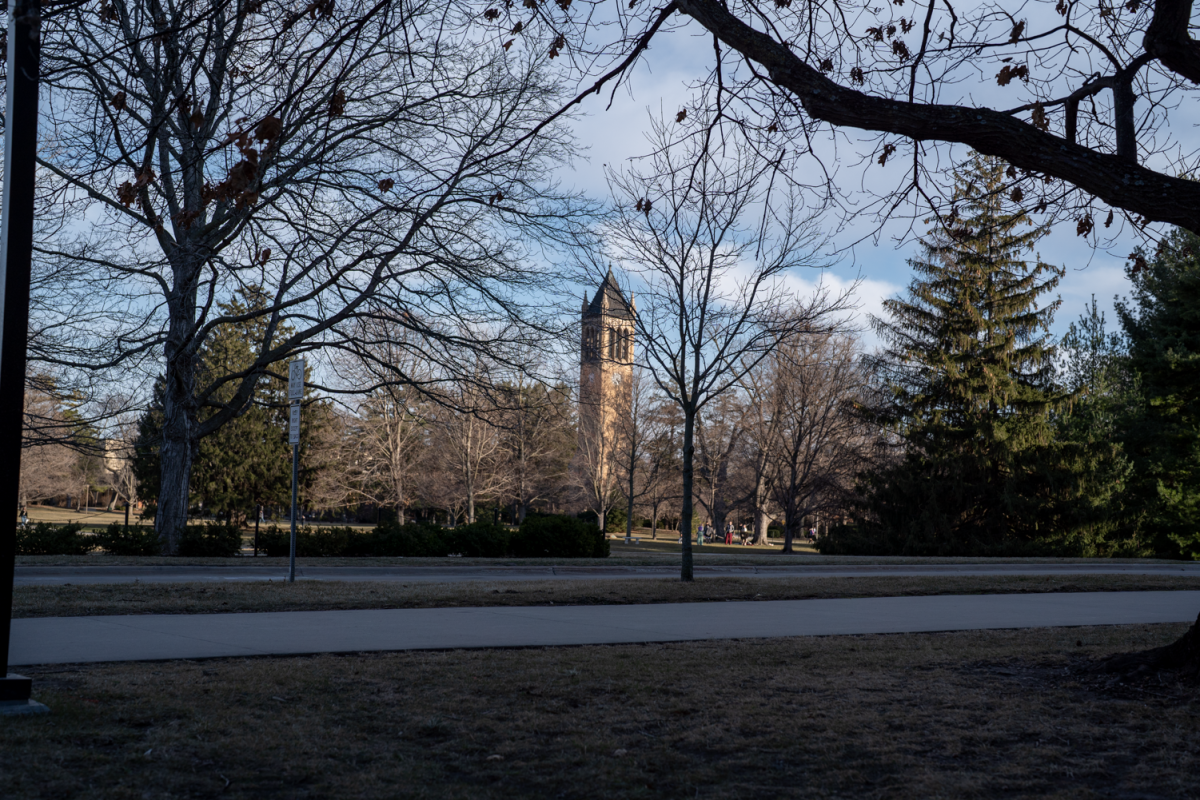The trouble that arises in reviewing “Aliss at the Fire” is the unfortunate fact that a worthy review may be longer than the novel itself. When I spotted this slim edition in a Brussels bookstore, just a straight line from Grand Place, I happened to notice on the cover of this beautiful blue Fitzcarraldo edition a clear sticker with fine gold lettering: “Winner of the Nobel Prize in Literature.”
I had, or so I thought, never heard of Jon Fosse. This was until the cashier shrewdly pointed out that “Septology,” Fosse’s magnum opus, had been conveniently compressed into one 800-page volume—and here I was, holding a slim 74-page pamphlet. I asked her if she thought I should read “Septology” instead, but she urged me to stick with my choice. Accordingly, when I was later reading more about Fosse, The Guardian suggested that “if you only read one” of Fosse’s novels, “Aliss at the Fire” is the proper entrance point.
“Aliss at the Fire” evades the traditional book reviewer or literary critic. It reminds me of what Martin Amis said in an essay about Saul Bellow’s “The Adventures of Augie March.”
“Literary criticism,” Amis wrote, “as normally practised, will tend to get in the way of a novel like Augie March.” Therefore, as a critic, it is unnecessary (and possibly damaging) “to interpose yourself.” Amis further expounds on “Augie March,” saying the experience of being a critic to such a stunning novel is like being “a guide in a gallery where the signs say Silence please; you are shepherding your group from spectacle – awed, humble, and trying, so far as possible, to keep your mouth shut.”
I have transferred this practice to my reading and analysis of “Aliss,” and it has proven to be the only way to view such a complex work. As mentioned earlier, it is daringly short but not lacking in the category of substance. Fosse blends the story with the experience of each of his characters and fluidly moves the narrative in and out of different time periods.
The novel begins in 2002 with Signe pondering the loss of her husband, who suddenly disappeared while boating in a lake near a Norwegian fjord in 1979. As the novel progresses, we are let into the minds of Asle (Signe’s husband) and his distant ancestors, which may provide the answers to what happened to Asle. Perhaps, of course, I am breaking the rule Amis established: “interposing” myself. However, Fosse keeps the plot vague with no direct answers and plenty to think about. What else, if not to reveal the central message, would the intermingling of fate both past and present be for? What can our past, especially the familial past, tell us about ourselves in the present? This is a pressing question for the reader to consider.
Anyone who has read Fosse will understand why the book description labels his prose as “vivid” and “hallucinatory.” Fosse, in “Aliss,” searches for the kernel of depression, of loss, of grief, of the unanswerable and the unknown. Below is an example of his stream of consciousness:
“… he thought it over and over again but it always just stays the way it is, he’ll probably never do anything about it until the doorknob falls off and is lying on the front step, he thinks and he walks into the hall and the old walls there settle into place all around him and say something to him, the same way they always have, he thinks, it’s always like that, whether he notices it and thinks about it or not the walls are there, and it is as if silent voices are speaking from them, as if a big tongue is there in the walls and this tongue is saying something that can never be said with words, he knows it, he thinks, and what it’s saying is something behind the words that are usually said, something in the wall’s tongue, he thinks, and he stands there and looks at the walls, no, what is wrong with hum today? why is he being like this?…”
And on and on it goes, rarely including a period to punctuate the madness.
Reading Fosse is exhausting and exhilarating, refreshing and unlimited; a large paradox. He falls into a distinct and remarkable Norwegian literary tradition with the likes of writers such as Karl Ove Knausgaard (who happens to be my favorite) and Henrik Ibsen.
Fosse is not for everyone, which means he is the standout for some. I happen to feel this gravitation toward his work. Find out for yourself where you lie.













